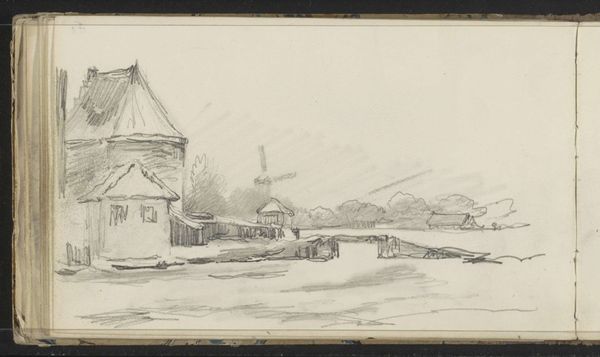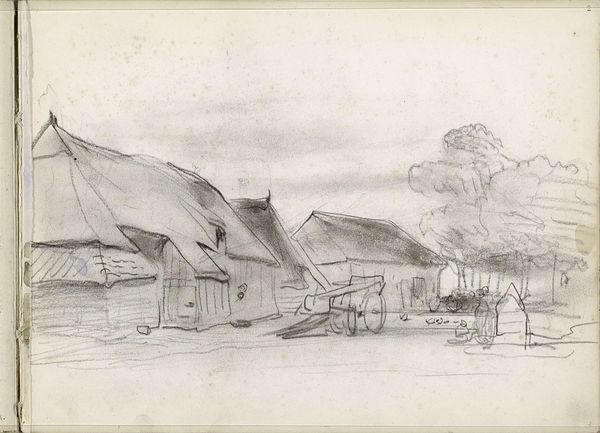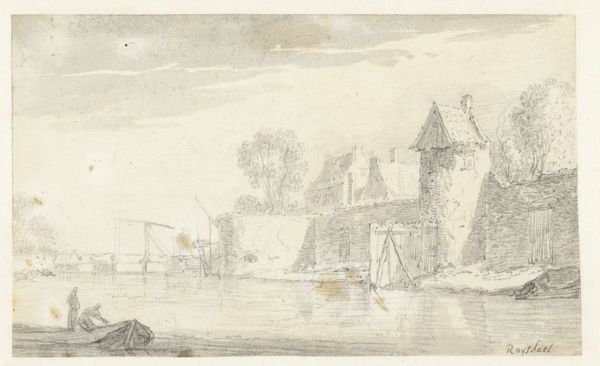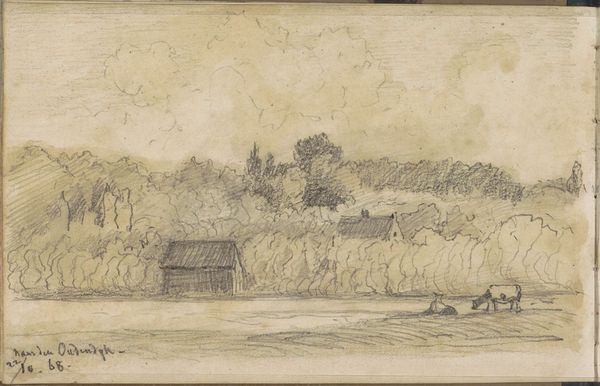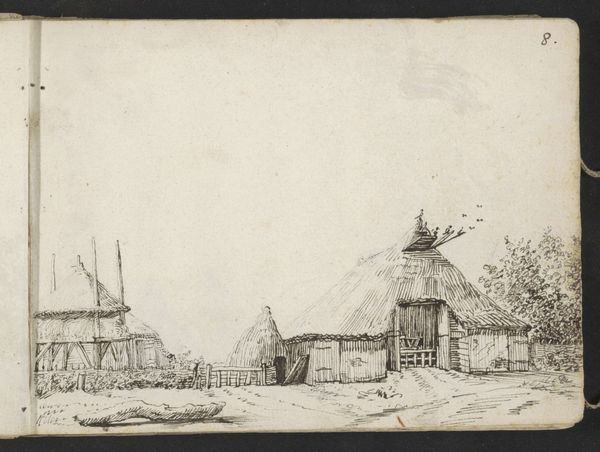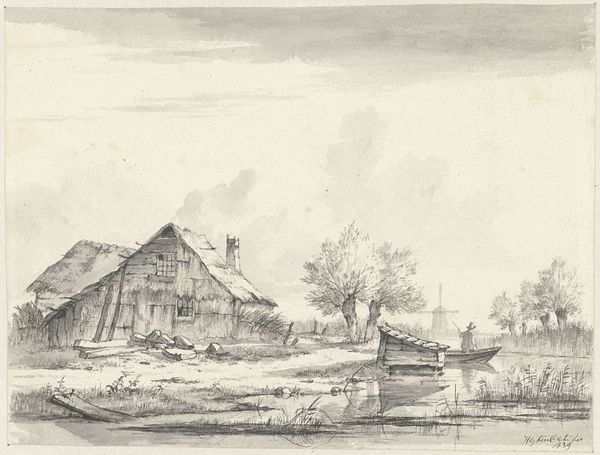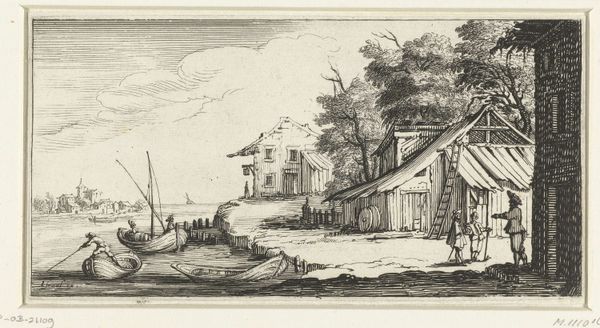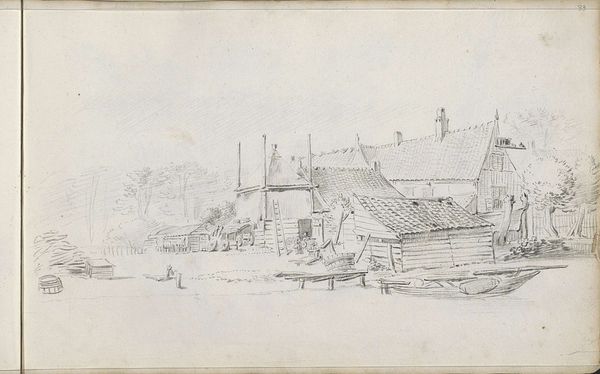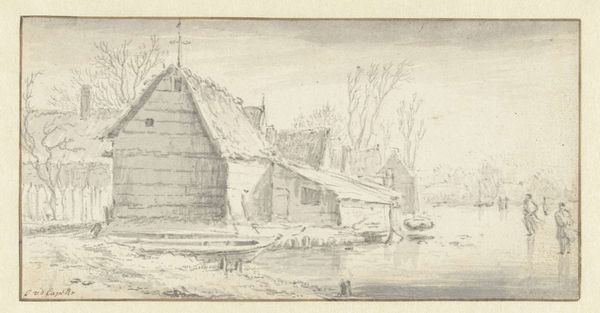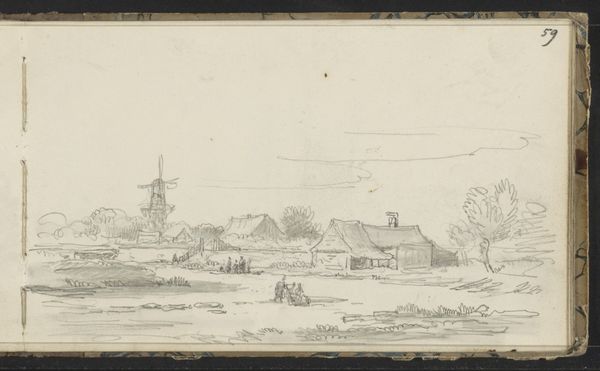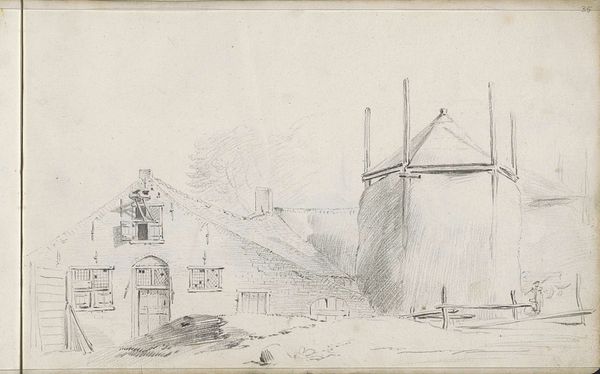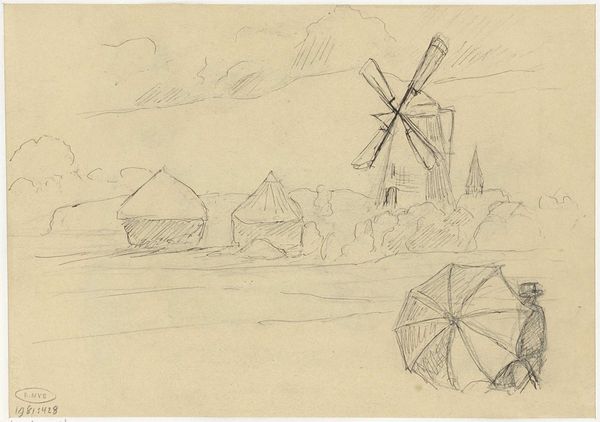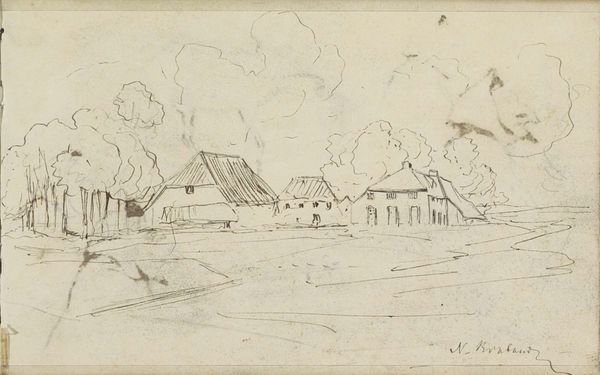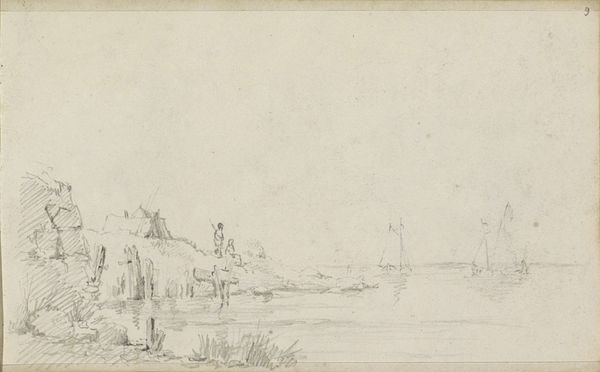
drawing, pencil
#
drawing
#
dutch-golden-age
#
landscape
#
coloured pencil
#
romanticism
#
pencil
Copyright: Rijks Museum: Open Domain
Arnoldus Johannes Eymer made this graphite drawing of a village scene with a windmill in the Netherlands sometime in the first half of the 19th century. While the Dutch Golden Age of painting had passed, windmills remained an iconic symbol, representing the nation's ingenuity and struggle against the sea. What can art tell us about the shifts in Dutch society and identity during this period? Eymer's choice of subject reflects a broader 19th-century interest in landscape and the everyday lives of ordinary people. The focus on rural life can be seen as both a celebration of traditional values and a response to increasing industrialization and urbanization. Was this a purely nostalgic vision, or did it offer a subtle commentary on the changing social landscape? To better understand Eymer's artistic choices, we can look at exhibition records, art criticism from the period, and the artist's other works to gain more insight into how artists negotiated the complex social and political landscape of the time.
Comments
No comments
Be the first to comment and join the conversation on the ultimate creative platform.
